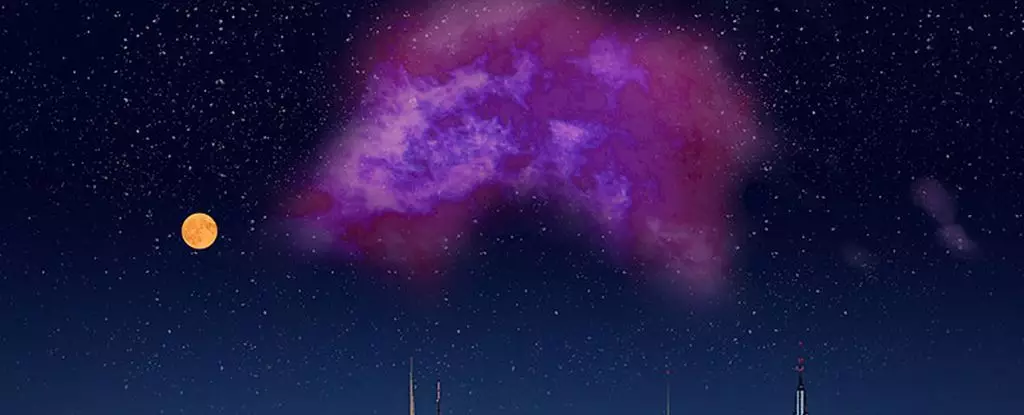In a remarkable stride for observational astronomy, researchers have unveiled a massive cloud of molecular hydrogen, affectionately dubbed Eos. Located just 300 light-years from Earth and positioned at the edge of the Local Bubble—a region of space that is surprisingly not as empty as one might think—this crescent-shaped entity challenges our preconceived notions about the interstellar medium. It not only signifies the first identification of molecular material in interstellar space through the detection of far-ultraviolet light but also enriches our understanding of primordial cosmic ingredients scattered throughout the universe.
Innovative Methods Uncover the Invisible
Astrophysicist Blakesley Burkhart and her team employed a groundbreaking method to discover Eos, marking a shift from traditional methods that predominantly rely on detecting carbon monoxide as a tracer to gauge the interstellar medium. Their focus on far-ultraviolet emission—the glow produced by molecular hydrogen when illuminated by starlight—undermines the conventional reliance on more frequently observed substances. This innovative technique opened a new avenue in astrophysics, suggesting that many clouds shrouded in darkness may contain abundant materials essential for stellar birth and evolution.
Historically, astronomers would gaze into the night sky and marvel at the isolated brilliance of stars and planets, often overlooking the subtle, crucial dynamics at play between these celestial bodies. The vast expanses of interstellar space often seem barren, yet Eos’s discovery exposes a bustling anatomical fabric of the cosmos that is seldom seen. It exemplifies the molecular material that exists between the stellar populations—an enigmatic soup where new stars are forged.
The Significance of Eos
Eos spans approximately 80 to 85 light-years in diameter and harbors around 2,000 solar masses of hydrogen, representing a significant portion of its total mass. To visualize Eos in our night sky, it would appear forty times wider than the full Moon—a staggering indication of its scale and presence. This immense cloud is not static; it is subject to the forces of nearby stars, which evaporate parts of it as a result of photodissociation—a process leading to its steady dissipation at a rate of roughly 600 solar masses per million years. In cosmic terms, the clock is ticking; Eos has an estimated lifespan of just 5.7 million years before it is completely dispersed.
The implications of this discovery extend far beyond just understanding Eos itself. Burkhart emphasizes that uncovering such molecular clouds could lead to more comprehensive models of star formation and interstellar transformation. Stars are not merely born out of nowhere; they stem from intricate processes of gas and dust conglomeration that are still poorly understood. Eos offers a unique opportunity for researchers to observe these dynamic processes in real time, providing a more vivid portrait of how galaxies evolve over generations.
A New Era for Astronomical Exploration
The astronomical implications of Eos are vast. Cosmologist Thavisha Dharmawardena from New York University anticipates that this discovery might just be the tip of the iceberg. By employing the techniques used to find Eos, astronomers can initiate a more extensive search for other hidden molecular clouds throughout the Milky Way. This may lead to a profound reevaluation of our understanding of star formation history not only in our galaxy but across the wider universe.
Furthermore, the implications of using far-ultraviolet fluorescence emission to identify material in interstellar mediums could potentially rewrite entire chapters in the history of cosmic evolution. The opportunity to discover invisible structures could transform our grasp of the progression from diffuse gas to stellar formations, unveiling hidden clouds across vast cosmological distances and expanding our tapestry of cosmic knowledge.
As researchers delve deeper into this realm, they find themselves at the intersection of discovery and wonder, with Eos prominently shining a light on the mysteries of the universe. The ability to observe previously hidden components of cosmic architecture not only enhances our understanding of the mechanics of star formation and evolution but also challenges us to rethink our existing models of galaxy formation. In the grand scheme of the universe’s narrative, the unmasking of Eos represents a pivotal moment that propels the field of astrophysics into a promising and expansive frontier.


Leave a Reply